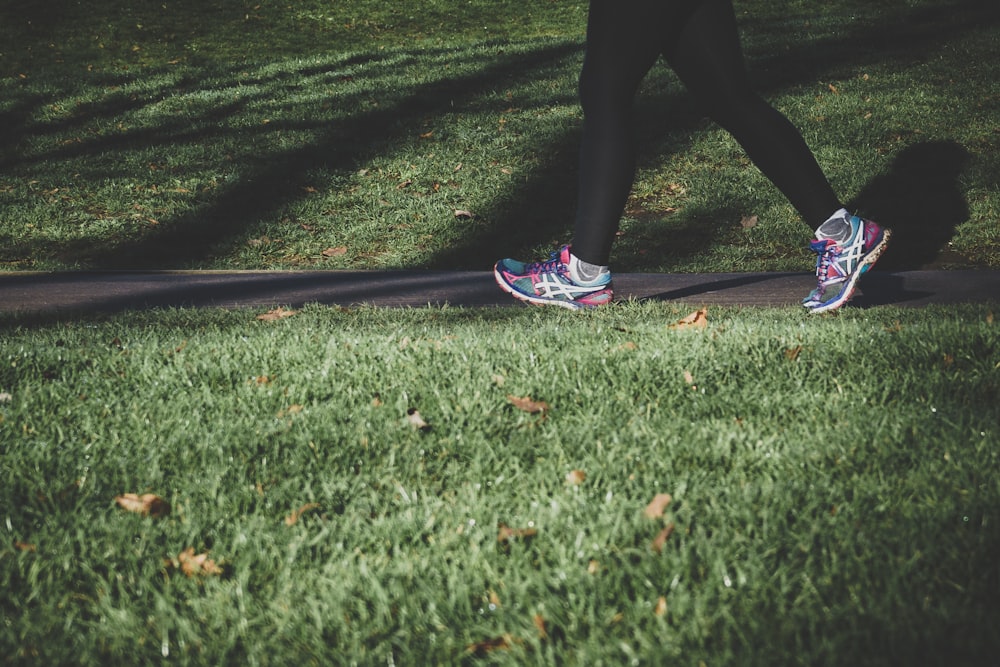目次
変形性膝関節症例に対するウォーキングは有害?
最近は自身の健康を増進する目的でウォーキングに取り組む中高年者が増えております.
ウォーキングは科学的にもさまざまな効果が明らかにされております.
しかしながら変形性膝関節症がある場合のウォーキングってどうなのでしょうか?
今回は変形性膝関節症例に対するウォーキングは有害なのかどうかを考えるうえで参考になる論文をご紹介させていただきます.

今回ご紹介する論文
Am J Phys Med Rehabil. 2024 Jan 3. doi: 10.1097/PHM.0000000000002403. Online ahead of print.
The Effects of Long-Term Walking Exercise on Structural Progression, Symptoms, and Extensor Muscle Strength in Patients with Mild or at High Risk of Knee Osteoarthritis: Data from the Osteoarthritis Initiative
Hui Zhang, Junqing Wang, Tao Shuai 1, Kang Li, Yong Nie
Affiliations expand
PMID: 38206636 DOI: 10.1097/PHM.0000000000002403
今回ご紹介する論文は2024年に掲載された論文です.
研究の目的
Objective: To assess the relationship between walking exercise and medial joint space narrowing (JSN) progression, symptoms, and knee extensor muscle strength (EMS) in early knee osteoarthritis (OA) patients.
この研究では初期の変形性膝関節症(OA)例においてウォーキングと内側関節裂隙幅の狭小化,膝関節症状,膝伸展筋力(EMS)との関係性を明らかにすることを目的としております.
研究の方法
Methods: This nested cohort study within the Osteoarthritis Initiative included participants aged 50 and above with knee OA (Kellgren-Lawrence grades 0-2). Walking exercisers were identified using a modified Historical Physical Activity Survey Instrument. Differences in medial JSN, Knee Injury and Osteoarthritis Outcome Score (KOOS), and knee EMS were evaluated through the three-way ANOVA.
Osteoarthritis Initiativeのネステッドコホート研究であり,50歳以上の変形性膝関節症例(Kellgren-Lawrenceグレード0~2)を対象としております.
身体活動調査票(Historical Physical Activity Survey Instrument)を修正したものを用いてウォーキング者を同定しております.
内側関節裂隙幅の狭小化,KOOS(Knee Injury and Osteoarthritis Outcome Score),膝関節伸展筋力の差を三元配置分散分析により評価しております.
研究の結果
Results: Among 896 participants, 83.4% reported walking exercise. Female walkers showed significant improvements in symptoms (KOOS-Pain: P < 0.001; KOOS-Symptom: P < 0.001; KOOS-Quality of Life (QOL): P < 0.001; KOOS-Function, Sports, and Recreational Activities (FSR): P = 0.007). Similar results were observed in male walkers (KOOS-Pain: P < 0.001; KOOS-Symptom: P < 0.001; KOOS- QOL: P = 0.001; KOOS- FSR: P = 0.009). Walkers showed significantly increased knee EMS at 24 months (Female: P < 0.001; Male: P = 0.003). Female non-walkers had significantly decreased knee EMS at 24 months (P < 0.001). Walkers showed significant improvement in medial JSN (OR = 1.1, 95% CI: 1.0 to 1.2) and KL grade (OR = 1.0, 95% CI: 1.0 to 1.1) compared to non-walkers.
896例の対象者のうち83.4%がウォーキングをしていると報告しておりました.
女性ウォーキング者は症状の有意な改善を示しました(KOOS-Pain:P<0.001;KOOS-Symptom:P<0.001;KOOS-QOL(Quality of Life): P < 0.001; KOOS-機能、スポーツ、レクリエーション活動(FSR): P = 0.007).
同様の結果が男性ウォーキング者でも観察されました(KOOS-疼痛:P<0.001;KOOS-症状:P<0.001;KOOS-QOL:P=0.001;KOOS-FSR:P=0.009).
ウォーキング者は24ヵ月後に膝関節伸展筋力が有意に増加しました(女性:P<0.001;男性:P=0.003).
女性非ウォーキング者は24ヵ月後の膝関節伸展筋力が有意に低下しました(P<0.001).
ウォーキング者は非ウォーキング者と比較して,内側関節裂隙幅(OR = 1.1、95%CI:1.0~1.2)およびKLグレード(OR = 1.0、95%CI:1.0~1.1)で有意な改善を示しました.
研究の結論
Conclusion: Walking exercise prevents structural progression and improves symptoms. Meanwhile, the increased knee EMS in all walkers further supports the validity of recommending walking exercises for early-stage knee OA patients.
ウォーキングは変形性膝関節症の構造的進行を予防し,症状を改善することが明らかとなりました.
さらにすべてのウォーキング者における膝伸展筋力の増加は,早期変形性膝関節症例にウォーキングを推奨することの妥当性をさらに支持するものであります.
今回は変形性膝関節症例に対するウォーキングは有害なのかどうかを考えるうえで参考になる論文をご紹介させていただきました.
初期の変形性膝関節症であればウォーキングは推奨すべきといった結果ですね.
末期の変形性膝関節症の場合にはどうなるのかといった点も気になりますが,初期の場合にはウォーキングによって変形性膝関節症が進行する可能性は低そうですね.






